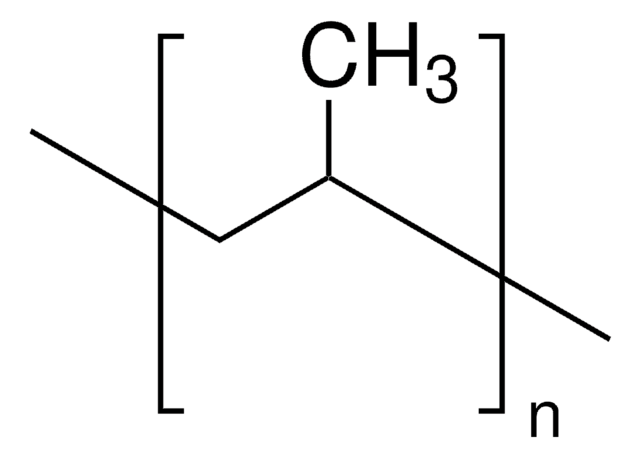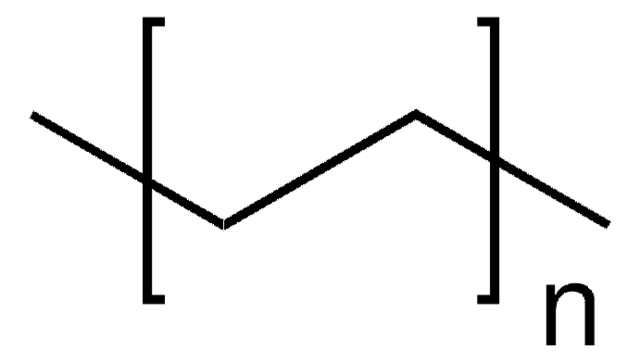428116
Polypropylene
Isotactic, average Mw ~12,000, average Mn ~5,000
Synonym(s):
PP
About This Item
Recommended Products
form
pellets
mol wt
average Mn ~5,000
average Mw ~12,000
viscosity
6.0 poise(190 °C, Brookfield Thermosel)(lit.)
mp
157 °C
acid number
<0.05 mg KOH/g
transition temp
softening point 163 °C (ring and ball, ASTM E 28)
density
0.9 g/mL at 25 °C (lit.)
SMILES string
CC=C
InChI
1S/C22H42O3/c1-2-3-4-5-11-14-17-20-21(25-20)18-15-12-9-7-6-8-10-13-16-19-22(23)24/h20-21H,2-19H2,1H3,(H,23,24)/t20-,21+/m1/s1
InChI key
NSYDMBURIUSUDH-RTWAWAEBSA-N
Looking for similar products? Visit Product Comparison Guide
Related Categories
Application
Physical properties
Storage Class Code
11 - Combustible Solids
WGK
WGK 3
Flash Point(F)
Not applicable
Flash Point(C)
Not applicable
Personal Protective Equipment
Choose from one of the most recent versions:
Already Own This Product?
Find documentation for the products that you have recently purchased in the Document Library.
Customers Also Viewed
Our team of scientists has experience in all areas of research including Life Science, Material Science, Chemical Synthesis, Chromatography, Analytical and many others.
Contact Technical Service





